The Indian tribe that gave up hunting to save forests
- Published
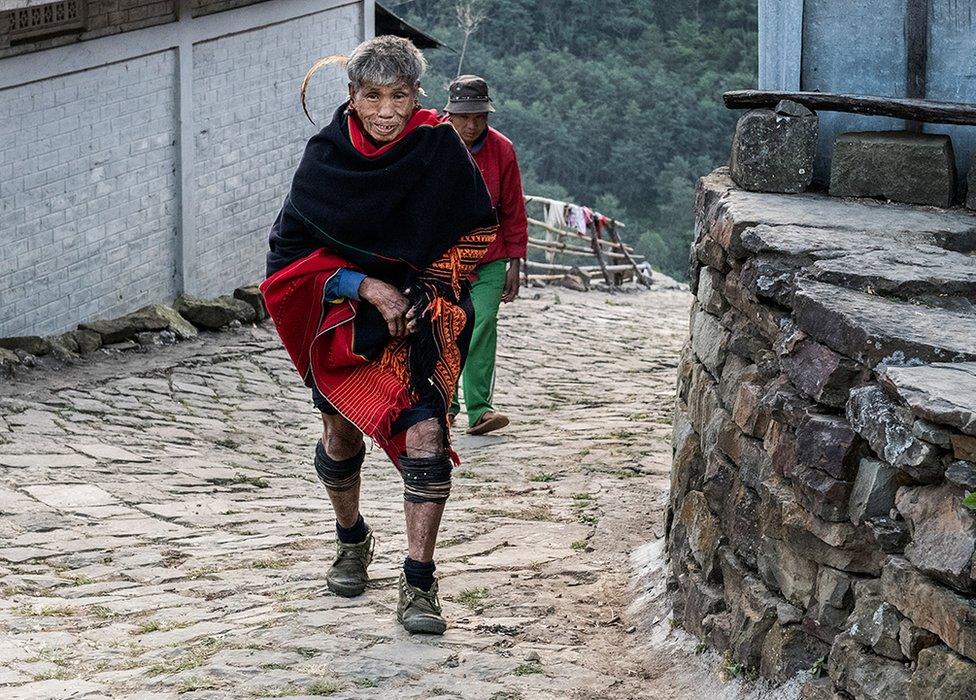
Chaiyievi Zhiinyii was a hunter
A tribe in the north-eastern Indian state of Nagaland gave up their ancient tradition of hunting to protect wildlife. Photographer Sayan Hazra chronicles life in the village years after it banished the practice.
At one time, 76-year-old Chaiyievi Zhiinyii was a skilled hunter. But he stopped hunting in 2001.
The Angami tribe gave up what was an important source of livelihood some 20 years ago in order to create a more stable ecosystem for future generations.
For centuries, many in the remote, hilly village of Khonoma spent the majority of their time hunting. They killed animals for sustenance but also because it was a tradition and a way of life.

It all began in 1993 when some tribespeople began a campaign to stop hunting. They were spurred to act after they discovered that the grey-bellied Tragopans, a type of pheasant, was an endangered species.
The region is home to a few hundred of the birds but they were often killed for their meat.

As a result of the campaign by some people in the tribe, the village council decided to cordon off about 20 sq km, where they would not allow hunting. In 1998 this area became the Khonoma Nature Conservation and Tragopan Sanctuary.
In the years since the council has banned all forms of hunting, logging, jungle burning as well as any kind of commercial operation that exploits natural resources and the forests that surround the village.

According to local tradition, members of the tribe are encouraged to keep the heads of hunted animals inside their homes.
While most of the hunters have given up their rifles, some still display the heads of the animals they had killed.
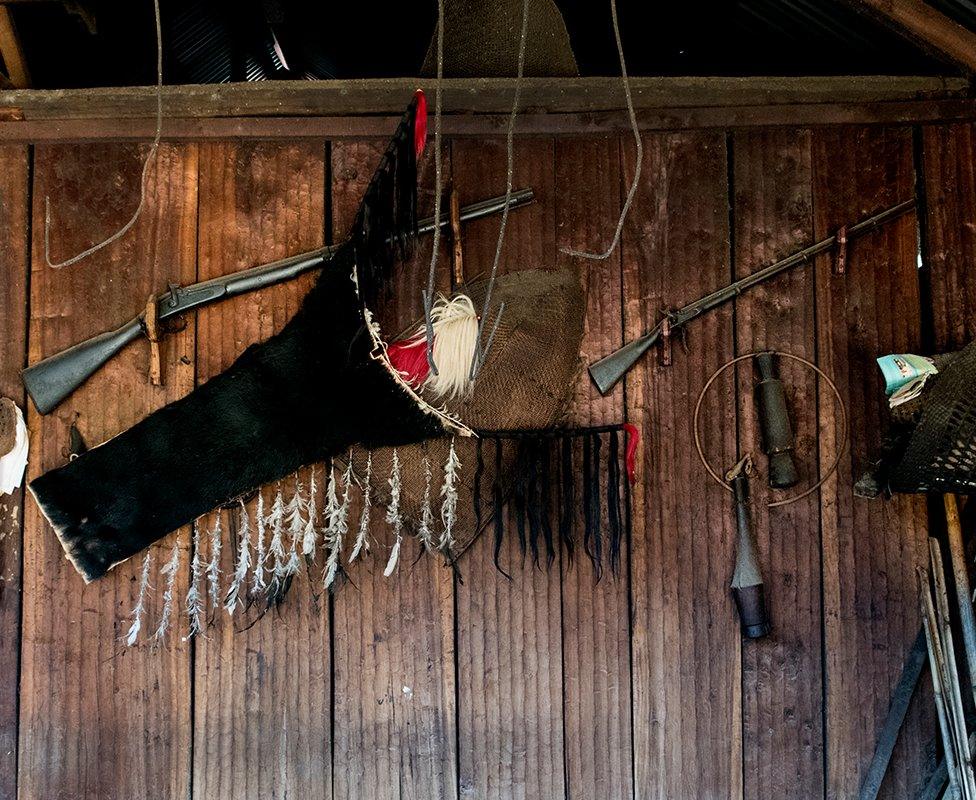
Muzzle-loading guns and a range of traps are among the most widely used hunting equipment in Nagaland.
For many hunters, these weapons embodied skill as well as courage. They represented a sacred practice that was passed down the from one generation to another.
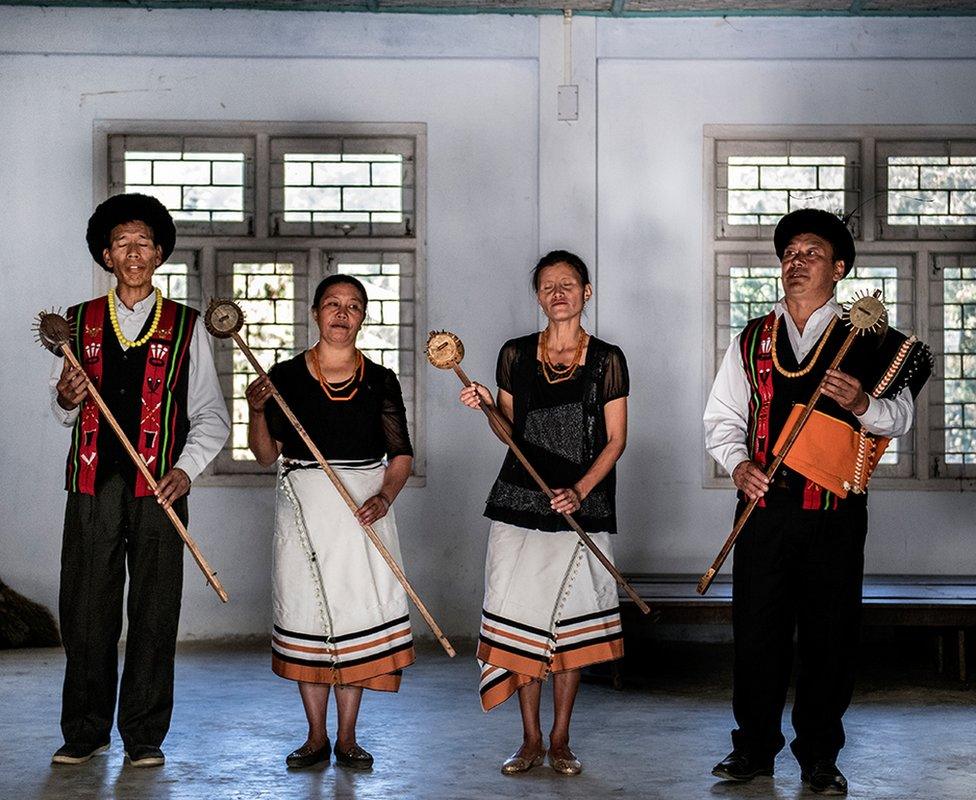
The community is also fond of folk music, which its members practice and often perform in front of the village council or during celebrations.
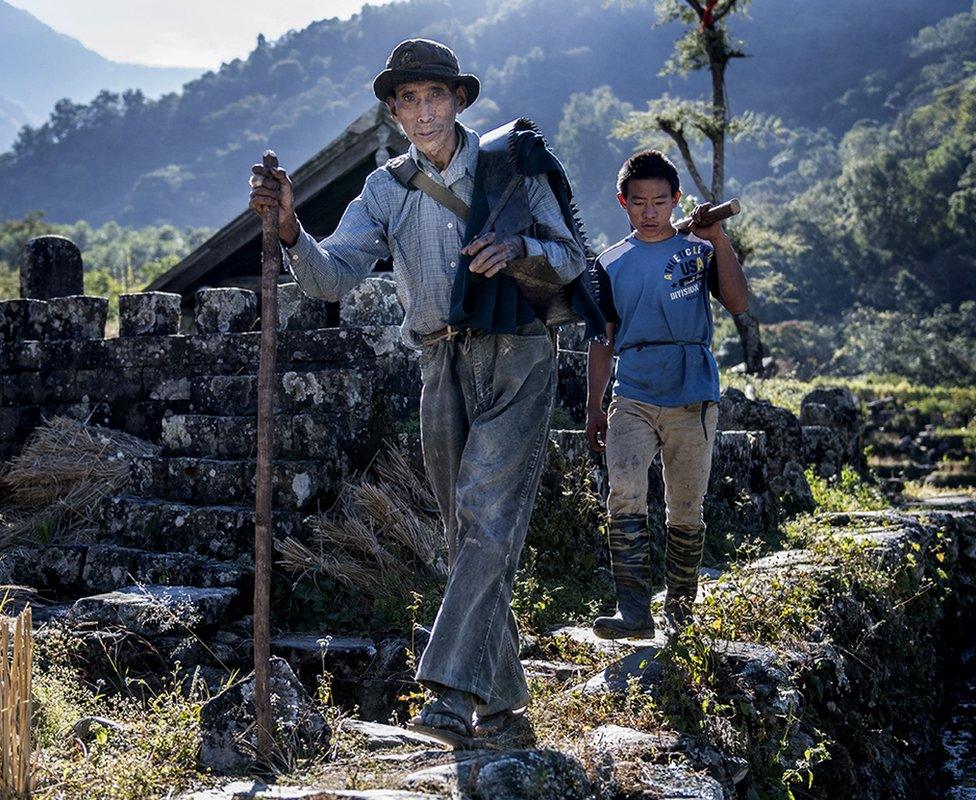
Khonoma village boasts a wide range of plant species, which include medicinal varieties as well as wild vegetables.
The tribe's ecological sensitivity extends to their agricultural practices as well. They all farm for a living but they do not use chemical fertilisers or pesticides.
They also practice an elaborate system of terraced farming and irrigation for higher yields.
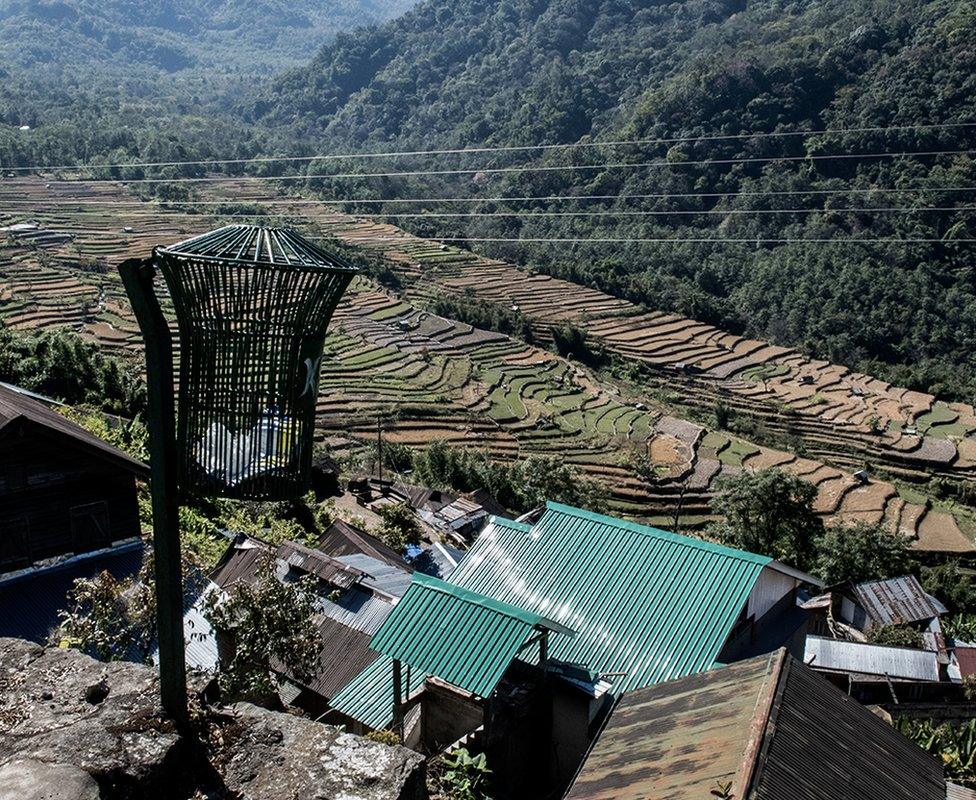
"We don't want our folklore to become meaningless to our future generations as it has names of so many wild species of birds, plants, animals and wild flowers," said Mr Khriekhoto Mor, chairman of the Khonoma Nature Conservation and Tragopan Sanctuary.
"Our life, tradition and culture are very much dependent on nature and its habitats and we are determined to protect them. "
Correction: This article has been amended to reflect that the name of the tribe is Angami, and not Khonoma.
Sayan Hazra is a photographer based in India.
- Published26 November 2017
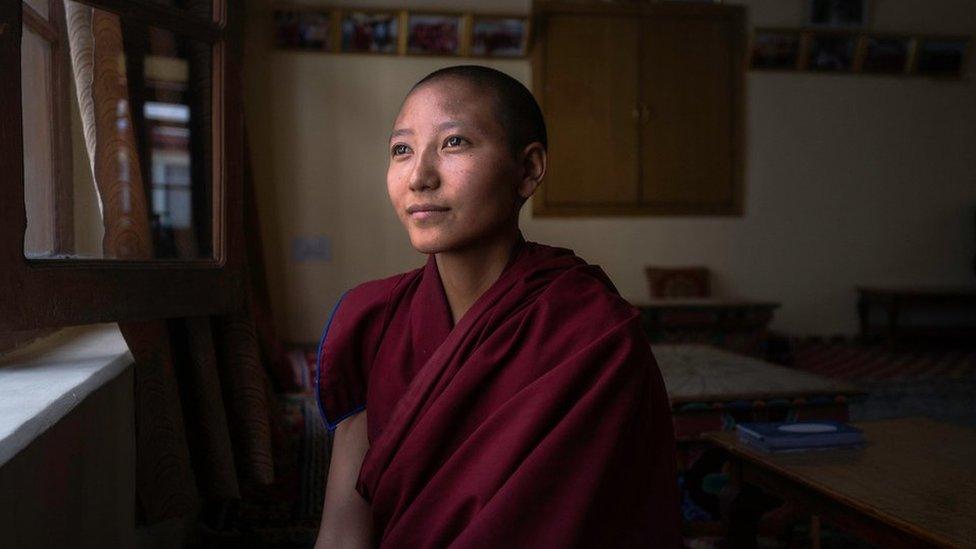
- Published1 September 2017